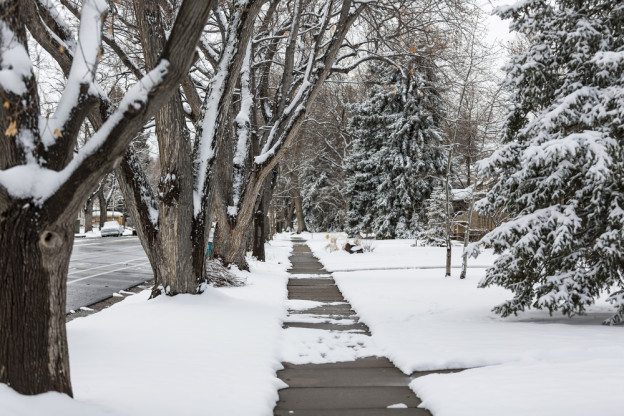This time of year is dangerous when it comes to walking and driving. Winter weather conditions can lead to icy sidewalks and roads. These can be dangerous for pedestrians, bicyclists, and motorists. Cars and bicycles have no traction on ice, while pedestrians can slip and fall on ice and suffer back and head injuries and even die.
Not everyone can see black ice, which makes it especially dangerous. Black ice forms in rainy weather, when the air’s surface is at or below 32 degrees Fahrenheit. The rain freezes once it hits the ground, creating ice. When the ice or snow melts and then freezes again, it creates black ice.
Read on to learn about where to find black ice, how to stay safe and what the law says about liability for slipping on ice injuries.
Where Black Ice Occurs
If you live in a cold area where temperatures drop below freezing, you will likely experience black ice at some time. Black ice occurs in areas where there is a lack of sun. Since the ice cannot melt, it tends to linger for days, causing dangerous conditions. Therefore, be wary of tunnels and shaded areas with trees. Bridges and overpasses tend to freeze quickly, so be careful when driving on these roads.
Black ice occurs overnight—between sunset and sunrise—when temperatures drop to their lowest levels. Therefore, you are most likely to experience it first thing in the morning, during your commute to work. Check the temperature in your car before leaving, and if it is close to freezing, exercise extreme caution on the roadways.
Slipping on Ice: What the Law Says
Under New York City Administrative Code Sidewalk Rules §7-210, property owners may be liable for keeping sidewalks in a safe condition. This means removing dirt, snow, ice and other debris from the sidewalk as needed. This also means repaving or repairing sidewalks that may be cracked or broken.
If a homeowner or business owner fails to maintain a sidewalk and, as a result, a person suffers an accident that leads to injury or death, the property owner may be responsible for the damages. This means that the owner could be sued for medical bills, lost wages, pain and suffering, funeral expenses, disfigurement, disability and other damages.
Therefore, if a person were to slip and fall on ice, he or she could seek legal action. A negligent property owner could face legal action from an injury victim, so it’s important to keep property clear of ice and other dangerous conditions.
Black Ice Safety Tips for Drivers
Here are some tips for avoiding accidents on black ice:
- Avoid driving in icy conditions. If you must drive, wait a few hours until the ice melts.
- Slow down. If you must drive on icy roads, go slow. Even if you have a four-wheel drive vehicle, you should not be going any faster than 45 mph.
- Keep extra space between you and other vehicles. It takes longer to stop when on ice, so avoid tailgating
- Don’t stomp on the brakes. Anti-lock brakes will lock up in the ice and snow, so go easy on them. Otherwise, you could skid.
- Avoid certain roads. Bridges, overpasses, and hilly roads can be especially dangerous when covered with ice. Avoid them if possible.
- Stay calm. Don’t freak out and oversteer, as this just makes the situation worse. If you do happen to hit the ice, just calmly drive over it without hitting the brakes.
Get Legal Help from a Brooklyn Personal Injury Lawyer
If you suffered an injury accident caused by black ice, you may have a legal case. While there’s not much that can be done about black ice on the road, black ice on sidewalks or stairs may be a premises liability issue. Seek legal help right away. Call the Law Office of Jeffrey K. Kestenbaum to determine slip and fall on ice settlement amounts and see how much compensation you can expect to receive. To schedule a consultation with an experienced Brooklyn personal injury lawyer, contact our Brooklyn office at (718) 237-5586.







